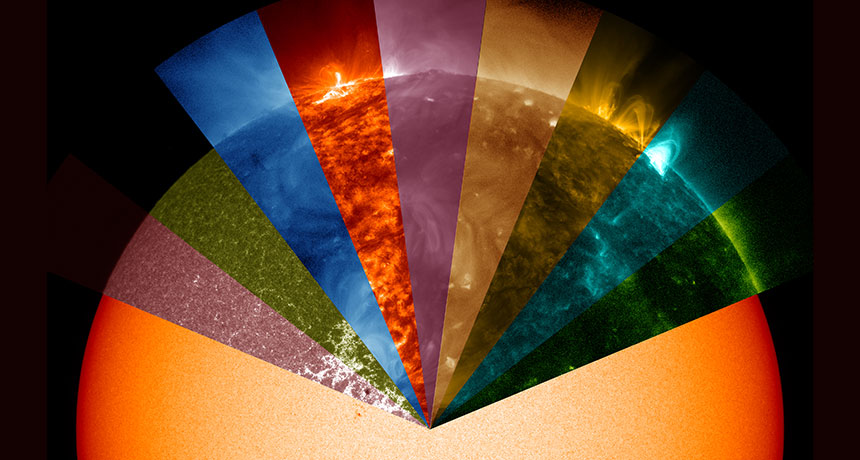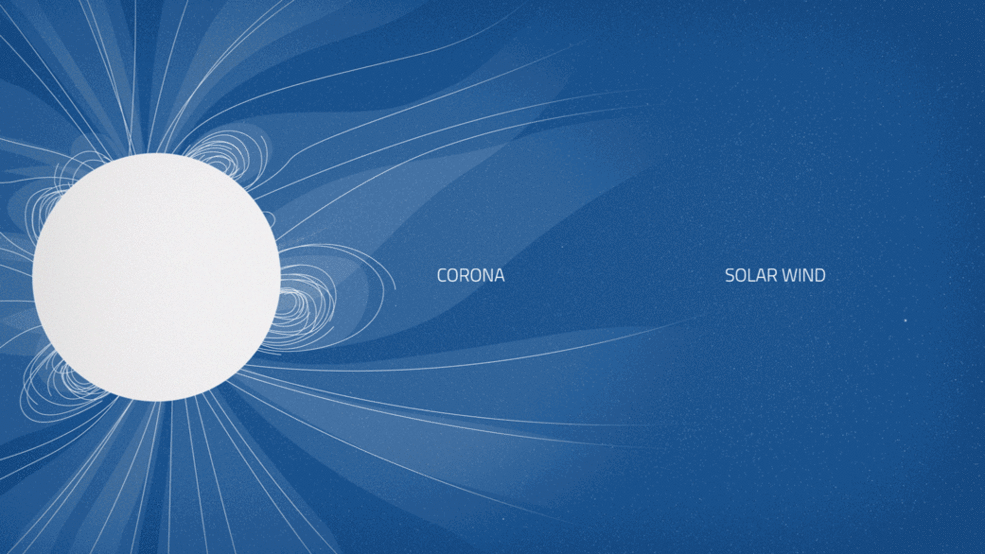atmosphere: The envelope of gases surrounding Earth, another planet or a moon.
aurora: A light display in the sky caused when incoming energetic particles from the sun collide with gas molecules in a planet’s upper atmosphere. The best known of these is Earth’s aurora borealis, or northern lights. On some outer gas planets, like Jupiter and Saturn, the combination of a fast rate of rotation and strong magnetic field leads to high electrical currents in the upper atmosphere, above the planets’ poles. This, too, can cause auroral “light” shows in their upper atmosphere.
chromosphere: A red, gaseous layer above the most visible part of the sun or other star. The inner part of the sun’s atmosphere.
corona: An adjective that refers to crown, as in crown-shaped viruses known as coronaviruses. (in astronomy) The outermost layer of the atmosphere surrounding the sun (and other stars). The sun’s corona is normally visible only during a total solar eclipse, when it is seen as an irregularly shaped, pearly glow surrounding the darkened disk of the moon.
coronal mass ejections: The powerful release of huge bubbles of gas threaded with magnetic field lines. These can be spew from the sun over a span of hours. They can accompany solar flares, but usually do not.
disk: A round, flat and usually fairly thin object.
eclipse: This occurs when two celestial bodies line up in space so that one totally or partially obscures the other. In a solar eclipse, the sun, moon and Earth line up in that order. The moon casts its shadow on the Earth. From Earth, it looks like the moon is blocking out the sun. In a lunar eclipse, the three bodies line up in a different order — sun, Earth, moon — and the Earth casts its shadow on the moon, turning the moon a deep red.
field: (in physics) A region in space where certain physical effects operate, such as magnetism (created by a magnetic field), gravity (by a gravitational field), mass (by a Higgs field) or electricity (by an electrical field).
grid: (in electricity) The interconnected system of electricity lines that transport electrical power over long distances. In North America, this grid connects electrical generating stations and local communities throughout most of the continent.
magnetic field: An area of influence created by certain materials, called magnets, or by the movement of electric charges.
moon: The natural satellite of any planet.
photosphere: A star’s outer shell (effectively its surface), form which most of its light radiates.
plasma: (in chemistry and physics) A gaseous state of matter in which electrons separate from the atom. A plasma includes both positively and negatively charged particles. (in medicine) The colorless fluid part of blood.
plume: (in geology) Fluids (air, water or magma typically) that move, largely intact, in a feather-like shape over long distances.
satellite: A moon orbiting a planet or a vehicle or other manufactured object that orbits some celestial body in space.
solar: Having to do with the sun or the radiation it emits. It comes from sol, Latin for sun.
solar eclipse: An event in which the moon passes between the Earth and sun and obscures the sun, at least partially. In a total solar eclipse, the moon appears to cover the entire sun, revealing on the outer layer, the corona. If you were to view an eclipse from space, you would see the moon’s shadow traveling in a line across the surface of the Earth.
solar system: The eight major planets and their moons in orbit around our sun, together with smaller bodies in the form of dwarf planets, asteroids, meteoroids and comets.
solar wind: A flow of charged particles (including atomic nuclei) that have been ejected from the surface of the star, such as our sun. It can permeate the solar system. When emitted by a star other than the sun, this radiation is known as a stellar wind.
sun: The star at the center of Earth’s solar system. It is about 27,000 light-years from the center of the Milky Way galaxy. Also a term for any sunlike star.
system: A network of parts that together work to achieve some function. For instance, the blood, vessels and heart are primary components of the human body's circulatory system. Similarly, trains, platforms, tracks, roadway signals and overpasses are among the potential components of a nation's railway system. System can even be applied to the processes or ideas that are part of some method or ordered set of procedures for getting a task done.
tool: An object that a person or other animal makes or obtains and then uses to carry out some purpose such as reaching food, defending itself or grooming.
unique: Something that is unlike anything else; the only one of its kind.








